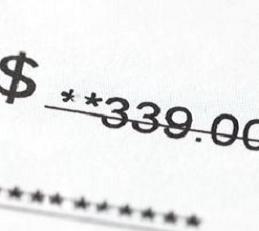Licensing royalty rates
Royalty rates database for third party license agreement comparables. What is royalty licensing? Generally, licensors require a royalty rate that falls within the range of to of the sublicensing income.
Their stake usually amounts to not less than half of these profits. In rare cases, the licensee will be able to negotiate a rate split and apply their own royalty obligation to the sale of sub-licensed products. When it comes to setting patent licensing royalty rates, there’s no room for guesswork – you need to calculate fair royalties based on income, costs or comparable market rates.
Generally, a royalty is provided between the inventor (the licensor) and manufacturer, publisher, agent, or distributor (the licensee). Essentially, an inventor will enter into a license arrangement to have the manufacturer, publisher, agent, or distributor of the product sell it for the inventor. Let’s say for the first years of your agreement the royalty rate is and you will resubmit back into marketing the product. Then royalty rate starting in year and continue to pay of royalties back into marketing. Product Development and annual sales projections.
This point ties into the one above. Trademark licensing royalty rates are payments made by a licensee to a licensor in exchange for the use of their trademark. For example, a fashion brand like Louis Vuitton might license their trademark ‘LV’ monogram to a sunglasses company, who will produce sunglasses bearing this distinctive mark.
The sunglasses company will pay Louis Vuitton royalties for the use of the trademark – usually a percentage of gross or net sales generated by the use of the trademark.
Patent and Trademark Office. For instance, if your product or intellectual property needs to be tested or certifie get the process going before you license so that you can snag yourself a higher royalty rate. After careful review by a blue-ribbon panel of expert licensing consultants uniquely qualified to know what the appropriate rate range is for specific properties in each licensing category, the information is organized into four time-saving sections that give researchers fast access to.
However, the profitability of the products or services that incorporate the patented technology plays a dominant role in royalty determination. LIMA reports that the average royalty for art licensing agreements is between –. License : Royalty -free license. The TTF of this projection is 2. OP to the licensee enterprise is multiplied by this factor. In most license agreements, royalty rates are defined as a percentage of sales or a payment per unit.
The many factors that can affect royalty rates include exclusivity of rights, available. Goldscheider defines the percent rule as “the licensee paying a royalty rate equivalent to percent of its expected profit for the product that incorporates the iP at issue”. The royalty rate for licensing tracks is 6. In Europe, the major licensing and mechanical royalty collection societies are: SACEM in France GEMA in Germany SFA in Italy. The mechanical royalty rate paid to the publisher in Europe is about 6. Published Price to Dealer (PPD).
Setting a royalty rate too high can scare away. Royalty payments are calculated on the types of royalty agreement made between two parties – it can be calculated on gross revenue, net revenue, price per unit, minimum sale, or fixed amount. Basically, a percentage of net revenue is given to the owner for exploitation of licensor’s intellectual property.
The new mechanical royalty rates for on-demand streaming recently established by the CRB increase from 11. That’s a increase over five years. As for the physical and download mechanical royalty of 9. CRB left this untouched in the most recent proceedings.

Comments
Post a Comment